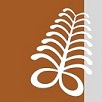Visualizing DBT and RH in Ahmedabad. Part 1
This series of posts explores different ways of visualizing the Dry Bulb Temperature (DBT) and Relative Humidity (RH) for a typical year using TMY2 (check) data. These are executed in R (link). It can serve as a template to visualize other time series data.
Once this series is over, I intend to focus on visualizing cyclical data. More on that later
<replace with svg image>
Above graph shows the variation in Dry bulb temperature (DBT) and Relative humidity (RH) variations over a day. The interconnectedness between these two series is apparent to the inquisitive eye. Relative humidity decreases with increase in temperature (as the moisture retaining capacity of the air increases) and vice versa.
If this data were to be plotted for a whole year, we get much more information about the diurnal and monthly variations throughout the year. However, the interrelationship between DBT and RH is no more apparent.
<replace with svg image>

Add new comment